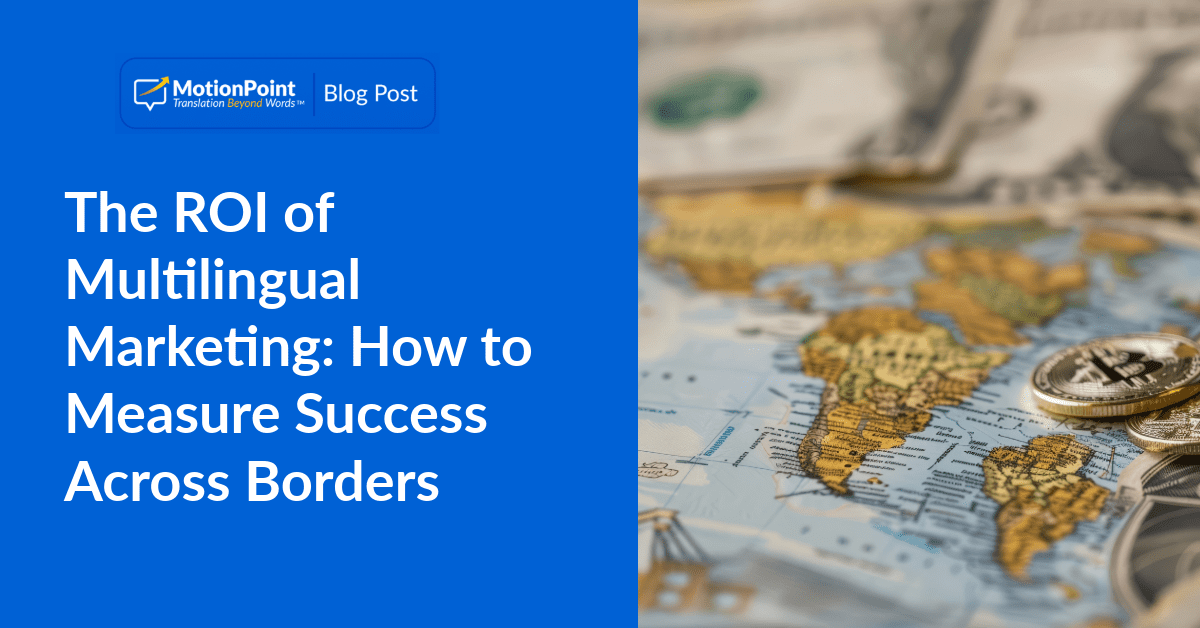As businesses expand into international markets, creating multilingual content that truly resonates with diverse audiences is not just advantageous; it’s essential. Simply translating text is not enough. You need to capture cultural nuances, adapt to local preferences, and ensure compliance with various regulations. This guide is tailored specifically for content marketing professionals who want to excel in multilingual content for global campaigns. Here, you will explore strategies for maintaining cultural context, essential tools, balancing automation with localization, avoiding common pitfalls, and finding resources for multilingual support.
How to Keep Cultural Context While Translating Your Content
Maintaining cultural context during translation is critical to ensuring your message resonates with local audiences.
Understanding Cultural Differences
Every culture has unique values, beliefs, and communication styles. What works in one region might not connect in another. For example, colors can evoke different emotions across cultures; in some Asian countries, red signifies luck, while in parts of the West, it might indicate danger.
Context-Aware Translation Tools
Utilizing advanced translation tools that consider cultural context can significantly enhance the relevance of your content. Adaptive AI and large language models like GPT-4 are paving the way by providing contextually accurate translations that go beyond mere word-for-word translations.
This image illustrates the cultural iceberg concept, emphasizing that much of a culture's values and beliefs lie beneath the surface and aren't immediately visible. (Source: Bubbles Translation)
Culturally Sensitive Translations
Companies that adapt their content to local cultural nuances often build stronger connections with their audiences. For instance, Netflix utilizes local jokes and phrases in its subtitles, enhancing viewer engagement. Collaborating with local experts is crucial to keeping translations relevant and meaningful.
Essential Tools for Accurate Multilingual Campaigns
Selecting the right tools is crucial for creating effective multilingual campaigns. Leveraging advanced technologies can significantly enhance both the accuracy and efficiency of your translations.
Role of AI in Translation
AI has transformed the translation landscape. Tools that incorporate machine learning and natural language processing (NLP) streamline the process, offering real-time insights into cultural nuances. These systems can even update translations as new content is produced, ensuring consistency and relevance.
Overview of Translation Tools
One standout option is ProseVision's multilingual templates, which facilitate the integration of text across various languages while preserving formatting and design. This tool not only ensures accurate translations but also saves time.
 A screenshot showcasing a multilingual template used in translation services, demonstrating effective content organization and presentation. (Source: Eurideas Translation)
A screenshot showcasing a multilingual template used in translation services, demonstrating effective content organization and presentation. (Source: Eurideas Translation)
Real-time Translation Capabilities
Recent advancements now allow for near real-time translation, which is particularly beneficial for live content such as social media and webinars. This “Translation as a Feature” approach enables businesses to engage effectively with diverse audiences without delays.
How to Balance Automation and Localization Effectively
Striking the right balance between automation and localization is key to meeting the needs of your global audience while optimizing efficiency.
Understanding When to Automate vs. Localize
Automation is ideal for handling repetitive tasks and basic translations. However, localization requires a deeper understanding of cultural contexts. The most effective approach often combines the speed of AI with the nuanced understanding of human translators.
Benefits of AI in Efficiency
AI-driven tools can provide insights into trending cultural references or preferred phrasing in specific regions. Moreover, continuous learning models allow these tools to improve over time, enhancing their ability to tailor content appropriately.
 A graph illustrating the impact of data availability on the effectiveness of traditional machine translations compared to human translations. (Source: MDPI)
A graph illustrating the impact of data availability on the effectiveness of traditional machine translations compared to human translations. (Source: MDPI)
Maintaining Nuance in Automated Translations
To ensure precise messaging, it is essential to have human editors refine translations generated by AI, especially when dealing with contexts rich in cultural references or idiomatic expressions. By preserving this balance, you can achieve both speed and quality in your multilingual campaigns.
Avoiding Common Pitfalls in Localization
Localization is fraught with challenges that can hinder your campaigns if not addressed proactively. Recognizing these pitfalls can help you avoid costly mistakes.
Frequent Localization Errors
Common issues include mistranslations, cultural insensitivity, and a failure to adapt marketing strategies to local customs. For instance, a literal translation of a marketing slogan could lead to a completely different implication in another language.
Importance of Quality Control
Implementing robust quality control processes is essential to protect the integrity of your multilingual content. AI-powered quality assurance tools can boost this process by checking for consistency and cultural relevance.
 Image showcasing errors in localization during translation processes, serving as a cautionary example for marketers. (Source: ResearchGate)
Image showcasing errors in localization during translation processes, serving as a cautionary example for marketers. (Source: ResearchGate)
Assessing Translation Quality
Regular evaluation helps identify weaknesses in your localized content. Involving native speakers in the review process ensures that both the tone and the message align with cultural expectations.
Where to Find Reliable Multilingual Support Resources
Building a strong support network and utilizing available resources can improve your multilingual content strategy dramatically.
Key Platforms and Communities
There are numerous online platforms dedicated to multilingual marketing and localization. Engaging with groups focused on translation and localization allows you to connect with professionals who can share insights and strategies.
Networking Tips with Localization Professionals
Networking is crucial for establishing partnerships that enhance your global strategies. Attend industry conferences, webinars, and engage in forums to connect with like-minded professionals.
 An infographic showing various methods and tips for providing effective multilingual customer support. (Source: BoldDesk)
An infographic showing various methods and tips for providing effective multilingual customer support. (Source: BoldDesk)
Training and Development Resources
Investing in continuous learning opportunities is vital for your team. Many organizations offer courses specifically focused on localization strategies, covering areas like AI integration and cultural awareness.
Measuring Success: Analyzing the ROI of Your Multilingual Strategies
Effectively measuring the return on investment (ROI) of your multilingual strategies allows you to understand their effectiveness and profitability.
Establishing Market-Specific KPIs
Set unique key performance indicators (KPIs) for each language and market segment. This will enable you to recognize cultural preferences in audience responses, which will facilitate nuanced performance evaluation.
Techniques for Localized Conversion Tracking
Implement conversion tracking systems that adapt to local currencies and consumer behavior. This approach allows for accurate ROI measurement across diverse markets.
 A graph depicting ROI metrics comparison across various countries, specifically related to multilingual marketing initiatives. (Source: MotionPoint)
A graph depicting ROI metrics comparison across various countries, specifically related to multilingual marketing initiatives. (Source: MotionPoint)
Cultural Engagement Metrics
Develop metrics that specifically measure cultural engagement, such as the effectiveness of local idioms and cultural references in your campaigns. This is essential for understanding how well your audience connects with your content.
Best Practices for Engaging Multilingual Audiences on Social Media
Social media provides an excellent platform for engaging diverse audiences, requiring a tailored approach for success.
Understanding Platform-Specific Strategies
Different social media platforms have varying levels of dominance in different regions. For example, WeChat is crucial in China, while VK resonates well with Russian audiences.
Creating Culturally Resonant Content
Partnering with local influencers who understand cultural nuances can significantly enhance your campaign’s relevance. Collaborating with them enables you to create content that feels authentic and relatable.
 An image showcasing the successful integration of multilingual campaigns on social media platforms and what resonates with local audiences. (Source: TranslatePress)
An image showcasing the successful integration of multilingual campaigns on social media platforms and what resonates with local audiences. (Source: TranslatePress)
Engaging Local Influencers and Community Management
Investing in local community management ensures culturally appropriate responses, fostering improved engagement rates.
Conclusion
In conclusion, mastering multilingual content for global campaigns involves more than just translation; it requires a thoughtful approach that accounts for cultural nuances, leverages technology, and maintains rigorous quality control. By utilizing advanced tools, implementing effective strategies, and ensuring compliance, your campaigns can reach global audiences while resonating deeply with them. As you refine your multilingual content strategy, focus on cultural sensitivity, employ the right tools, and continuously measure your success. With these practices in place, you are well-equipped to navigate the complexities of a multilingual world and create engaging, relevant content that drives meaningful results.
By adhering to these guidelines, you’ll be prepared to make the most of your multilingual content strategy, ensuring clear communication and cultural appreciation across diverse markets.

Comments (0)
Sign in to participate in the discussion or .